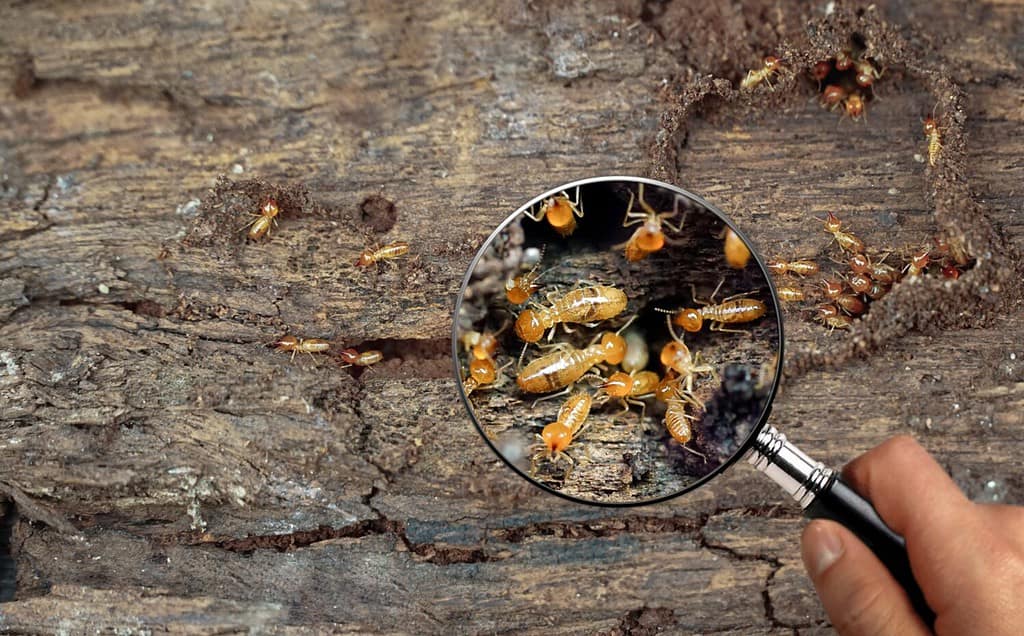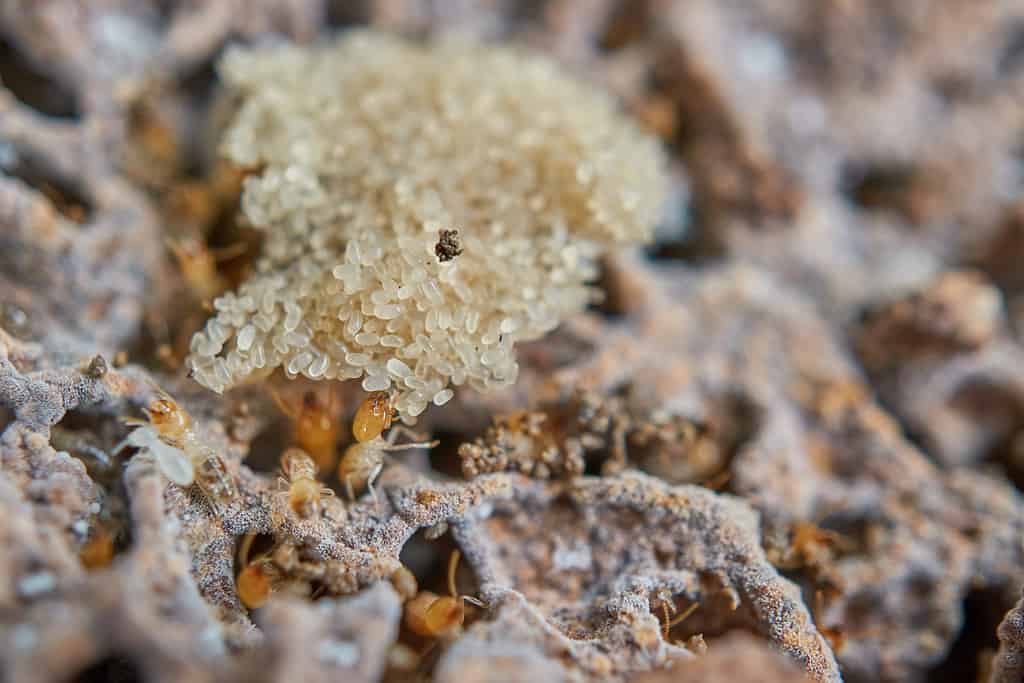These little critters only grow up to half an inch long (unless they’re kings or queens). They each have specialized roles within their colonies and while it’s admirable to see how they each tackle those roles with steadfast precision, they can be quite troublesome if they get into your home. Learn how to properly identify termite eggs! Plus, learn what to do if you have them.
Termite Life Cycle
Mating Flight
The termite life cycle begins when termites engage in a mating flight. During this process, both female and male termites step away from their colonies to mate with one another in a swarm. After procreating, the fertilized termites that have wings leave the swarm and head off to start their own colonies. Once they establish a new colony, the females become queens and the males become kings. These are important roles for each as they are accountable for reproduction. Interestingly, upon landing to start their new colonies, both females and males shed their wings.

Flying termites are the ones that eventually become kings and queens after mating.
©galuhtati/Shutterstock.com
Termite Eggs
The queen termite begins establishing a new colony after she has been fertilized. She lands in a preferred area and lays her eggs at this point. Larvae emerge from the eggs and molt. Each termite has a specific role. They either hatch into soldiers, workers, or reproductive termites.
Termite Larvae
The larvae stage is the initial stage immediately after hatching. From this stage, they grow to assume one of the designated roles within the colony.
Termite Nymphs
During the molting process, the termite is still a nymph. This is an early developmental stage when the nymph sheds its exoskeleton to take on the role of a reproductive termite. The needs of the colony determine how often this happens to the termite, even past the nymph stage.
Termite Roles
Each termite, depending on its role, has a distinct appearance. Worker termites have bodies designed to accomplish tasks within the colony. They are responsible for creating tunnels and different chambers. They also focus on grooming and feeding other members of the colony. Soldier termites are distinguished by their large heads. These termites also have hefty mandibles which assist them in battle. But unfortunately, they are unable to eat on their own — hence the worker termites stepping in. The reproductive termites have darker colorations and have wings that eventually grant them access to a mating flight so they can start the process all over again.

Termites have different roles, including workers, soldiers, and reproductives.
©Oasishifi/Shutterstock.com
How to Properly Identify Termite Eggs
If you’re far-sighted, you’ll need to take out your glasses to spot termite eggs. They’re tiny! But they are visible. In fact, they sort of look like a small pile of whitish powder like powdered sugar or flour. They may either be white or more of a light brown shade. It’s not the easiest task to spot these as they are not just out and about in an area you can examine. Instead, queens are clever and lay them in a protected environment like a termite mud tube. You’re likely to need a professional to get an accurate identification.

Termite eggs may either be white or more of a light brown shade.
©Criniger kolio/Shutterstock.com
What To Do If You Have Termite Eggs
Termite eggs require fumigation. You’re likely already dealing with an infestation that will only worsen if left untouched. At this point, you should be working with a qualified pest control company to review your options. An experienced pest control technician can put together a treatment plan that accounts for your budget but also recommends an effective treatment route.
After you discover what you think may be termite eggs, check around the area for any signs of damage. Get to knocking around your home to listen for any hollow areas. Look for any wood shavings — these are tell-tale signs that you have a termite colony hiding within the wood of your home. Once you’ve identified where the damage is, section it off. Then call an expert in.
Dangers of Termites
When there’s a termite infestation, you have a serious problem. These infestations can damage the structural integrity of your home and can cause collapse. Prompt attention to termite infestation is a must. This is just one of the dangers of termites. Termites can also be harmful to humans in other ways. For example, they can cause skin allergies when they bite you. They don’t typically look for humans for a source of food but when they do, it can lead to itchiness and swelling at the bite site along with a burning sensation.
Additionally, the presence of termites is associated with asthma and respiratory issues. Fungal infections may occur as well. Considering the varying dangers they present; they also take a toll on your nervous system. An infestation is mighty stressful, which is why getting professional help right away is the best course of action. Though it presents an unexpected expense, the peace of mind is worth it.
Thank you for reading! Have some feedback for us? Contact the AZ Animals editorial team.








